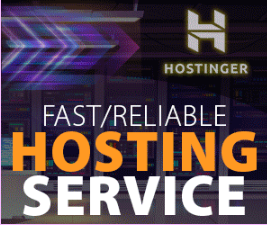Table of Contents
ToggleIntroduction
Launching a cloud kitchen requires more than just a good menu—you need a solid business plan to outline your goals, financial projections, and marketing strategies. A clear business plan serves as your roadmap, helping you stay focused, attract investors, and manage operations efficiently. In this guide, we’ll walk you through each step to create a comprehensive business plan for your cloud kitchen.
1. Executive Summary
The executive summary provides an overview of your cloud kitchen’s goals, concept, and financial vision. It should briefly answer the following questions:
- What type of food will you offer? (e.g., fast food, healthy bowls, niche cuisines)
- What is the mission and vision of your business?
- What are your long-term goals? (e.g., growth, profitability, or expansion into new locations)
- What are the key financial projections? (expected revenue, costs, and break-even point)
This section gives potential investors a quick snapshot of your kitchen’s potential and business model.
2. Define Your Cloud Kitchen Concept and Menu
Clearly define your menu and business concept to stand out from competitors.
- Choose a niche: Will you offer quick-serve meals, gourmet dishes, or sustainable foods?
- Understand your audience: Focus on demographics like millennials or health-conscious consumers.
- Menu development: Create a focused, profitable menu—offer a few core items that are easy to prepare and popular.
- Test sample pricing: Estimate prices based on market trends and competitor pricing.
Example Menu Items:
- Healthy Grain Bowls: $10 – $12
- Gourmet Burgers: $8 – $10
- Vegan Smoothie Bowls: $6 – $8
3. Market Analysis and Industry Trends
A market analysis will help you position your business strategically.
- Industry Trends: Monitor growth in the food delivery industry and identify popular cuisines in your area.
- Competitor Analysis: Research cloud kitchens operating in your delivery radius—what makes your offering different?
- Demand Forecast: Use available data to estimate demand for your food niche.
- SWOT Analysis:
- Strengths: Unique concept, cost-effective delivery model.
- Weaknesses: Limited customer interaction, high delivery fees.
- Opportunities: Expanding delivery trends, seasonal promotions.
- Threats: Intense competition, fluctuating ingredient prices.
4. Marketing and Branding Strategy
Your brand identity sets you apart from competitors. Plan your marketing strategies carefully.
- Branding: Create a unique logo, color palette, and slogan to reflect your kitchen’s concept.
- Social Media Marketing: Use Instagram, Facebook, and TikTok ads to engage potential customers.
- Third-Party Partnerships: Collaborate with delivery platforms like Uber Eats, Foodpanda, or Zomato to boost reach.
- Loyalty Programs: Offer discounts or loyalty rewards to encourage repeat orders.
- Influencer Marketing: Partner with local food bloggers or influencers to showcase your menu.
5. Operational Plan and Workflow
Your operational plan outlines the day-to-day activities needed to run your cloud kitchen smoothly.
- Order Workflow: Include the steps from order placement to food preparation, packaging, and delivery.
- Staffing Requirements: Plan how many chefs, delivery drivers, and assistants are required.
- Health and Safety: Ensure compliance with food safety regulations and hygiene standards.
- Equipment Needed:
- Ovens, fryers, and refrigerators.
- Packaging machines and eco-friendly food containers.
- Inventory tracking software for real-time stock updates.
6. Location and Delivery Strategy
Selecting the right location is crucial for smooth delivery operations.
- Kitchen Space: Decide whether to lease a commercial kitchen or use a shared kitchen space.
- Delivery Radius: Define your target delivery area to minimize delays.
- Third-Party Delivery Platforms: Work with platforms like Uber Eats or Foodpanda to manage orders efficiently.
- Traffic and Weather Considerations: Plan for traffic delays or peak delivery hours.
7. Financial Projections and Budget Planning
Detailed financial projections are key to understanding costs and potential revenue.
- Startup Costs: Include rent, equipment, licenses, and initial marketing campaigns.
- Operational Expenses: Estimate salaries, utility bills, packaging materials, and delivery fees.
- Projected Revenue: Forecast sales for the first 12 months, based on expected demand.
- Break-Even Analysis: Calculate how long it will take for your business to become profitable.
8. Licensing and Legal Requirements
To operate legally, you’ll need to obtain the necessary licenses and permits.
- Food Business License: Ensure you meet the regulatory requirements of your region.
- Health and Safety Compliance: Pass inspections and get certified for food safety.
- Insurance: Obtain insurance for employee liability and equipment damage.
- Supplier and Delivery Contracts: Draft agreements with suppliers and delivery partners.
9. Technology and Software Tools
Invest in technology tools to streamline operations and improve efficiency.
- POS System: Manage orders and payments using Point of Sale software.
- Inventory Management Software: Monitor ingredient levels and avoid shortages.
- Delivery Integration Tools: Sync orders with delivery platforms like Uber Eats.
- Analytics Tools: Use customer data to track preferences and sales trends.
10. Sustainability and Growth Plan
Planning for sustainability and growth ensures your business stays relevant over time.
- Eco-Friendly Practices: Use biodegradable packaging and minimize food waste.
- Seasonal Promotions: Introduce new menu items or discounts during holidays and festivals.
- Franchise Opportunities: Explore franchising once your brand gains traction.
- Expansion Plan: Identify new areas for opening additional kitchens.
Conclusion
A well-structured business plan is essential for launching a successful cloud kitchen. From market research and branding to financial planning and operational workflows, every element plays a crucial role. With a clear strategy and a focus on customer needs, your cloud kitchen can thrive in the competitive food delivery space. Regular updates to your business plan and continuous improvements will help you stay ahead of industry trends.



